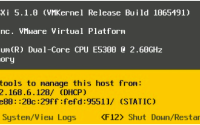VMware Fault Tolerance – Interview Questions
Important Interview Questions on VMware Fault Tolerance -
What is VMware Fault Tolerance?
VMware Fault Tolerance is a feature that allows a new level of guest redundancy. It provides 100% continuous availability for applications/Machines.
How do I turn it on?
The feature is enabled on a per virtual machine basis. Right Click on Virtual machine at vCenter Server, turn on fault tolerance.
What happens when I turn on Fault Tolerance?
In very general terms, a second virtual machine is created to work in tandem with the virtual machine you have enabled Fault Tolerance on. This virtual machine resides on a different host in the cluster, and runs in virtual lockstep with the primary virtual machine. When a failure is detected, the second virtual machine takes the place of the first one with the least possible interruption of service.
Why can’t I turn Fault Tolerance on?
VMware Fault Tolerance can be enabled on any virtual machine that resides in a cluster that meets the necessary requirements. If we can’t able to enable we have to check the pre-requisites, compatibilities, and errors then we have to troubleshoot.
How do I turn Fault Tolerance off?
To disable VMware FT on a virtual machine:
- In the vSphere Client, right-click the virtual machine with Fault Tolerance enabled, click Fault Tolerance, and click Disable Fault Tolerance.
Note: When you disable FT, the secondary virtual machine is powered off .
To turn off VMware FT on a virtual machine:
- In the vSphere Client, right-click the virtual machine with Fault Tolerance enabled, click Fault Tolerance, and click Turn Off Fault Tolerance.
Note: Turning off FT completely removes the secondary virtual machine and its data, such as task history and performance data.
How do I tell if my environment is ready for Fault Tolerance?
The VMware SiteSurvey Tool is used to check your environment for compliance with VMware Fault Tolerance.
What happens during a failure?
When a host running the Primary virtual machine fails, a transparent failover occurs to the corresponding Secondary virtual machine. During this failover, there is no data loss or noticeable service interruption. In addition, VMware HA automatically restores redundancy by restarting a new Secondary virtual machine on another host. Similarly, if the host running the Secondary virtual machine fails, VMware HA starts a new Secondary virtual machine on a different host. In either case there is no noticeable outage.
What is the logging time delay between the Primary and Secondary Fault Tolerance virtual machines?
The actual delay is based on the network latency between the Primary and Secondary. vLockstep executes the same instructions on the Primary and Secondary, but because this happens on different hosts, there could be a small latency, but no loss of state. This is typically less than 1 millsecond (ms). Fault Tolerance includes synchronization to ensure that the Primary and Secondary are synchronized.
In a cluster with more than 3 hosts, can you tell Fault Tolerance where to put the Fault Tolerance virtual machine or does it chose on its own?
You can place the original (or Primary virtual machine). You have full control with DRS or vMotion to assign it to any node. The placement of the Secondary, when created, is automatic based on the available hosts. But when the Secondary is created and placed, you can vMotion it to the preferred host.
What happens if the host containing the Primary virtual machine comes back online (after a node failure)?
This node is put back in the pool of available hosts. There is no attempt to start or migrate the Primary to that host.
Is the failover from the Primary virtual machine to the Secondary virtual machine dynamic or does Fault Tolerance restart a virtual machine?
The failover from the Primary to Secondary virtual machine is dynamic with the Secondary continuing execution from the exact point where the Primary left off. It happens automatically with no data loss, no downtime, and little delay. Clients see no interruption. After the dynamic failover to the Secondary virtual machine, it becomes the new Primary virtual machine. A new Secondary virtual machine is spawned automatically.
Where are Fault Tolerance failover events logged?
All failover events are logged by vCenter Server.
Does Fault Tolerance support Intel Hyper-Threading Technology?
Yes, Fault Tolerance does support Intel Hyper-Threading Technology on systems that have it enabled. Enabling or disabling Hyper-Threading has no impact on Fault Tolerance.
What happens if vCenter Server is offline when a failover event occurs?
When Fault Tolerance is configured for a virtual machine, vCenter Server need not be online for FT to work. Even if vCenter Server is offline, failover still occurs from the Primary to the Secondary virtual machine. Additionally, the spawning of a new Secondary virtual machine also occurs without vCenter Server.
How many virtual CPUs can I use on a Fault Tolerant virtual machine?
vCenter Server 4.x and vCenter Server 5.x support 1 virtual CPU per protected virtual machine.


